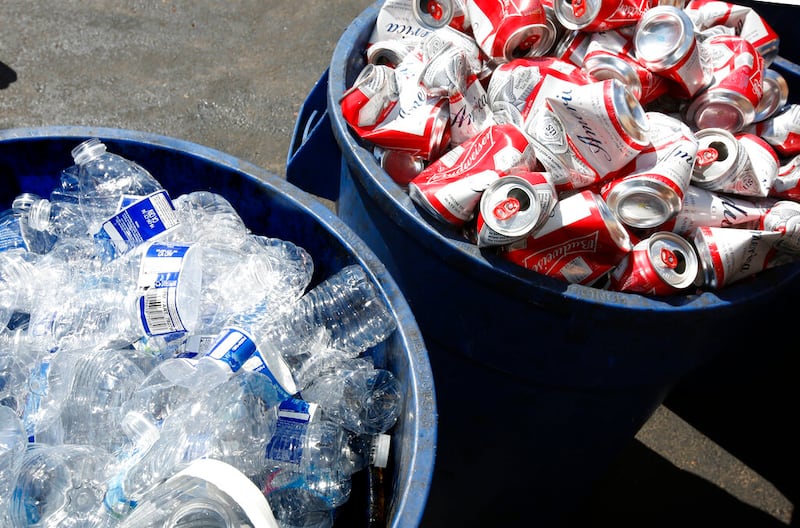Reduce, reuse and recycle have always been the pillars of sustainability. But what happens if one of them doesn’t work?
Recycling, which combines the other two Rs, works well for many materials. Take for instance aluminum, a metal that can be recycled indefinitely, or paper, which saves trees and water.
Plastic, on the other hand, is a completely different story. This material is usually down-cycled into lower-quality and lower-value products like car parts or carpet fiber, according to Frontline.
For a while, the U.S. and many other countries sent its recyclable plastic to China, but that isn’t a solution anymore.
This month, the U.N. will start work on a treaty to reduce plastic pollution as countries around the world see it as a top-level threat, per The Washington Post. A big part of the conversation will be about the role recycling does and can play.
How much plastic is recycled in the U.S.?
According to Outside Business Journal, only 9% of global plastic waste has been recycled. In the U.S., only a quarter of the waste is recycled. A vast majority of plastic ends up in landfills, unlike paper or aluminum.
Can plastic be recycled?
Yes, a few different types of plastics can be recycled.
The most widely recycled one is 1-PET, or polyethylene terephthalate, commonly used for water or soda bottles, according to Plastics for Change. PET is recycled at about 30%. When it’s used to package other things like containers for berries, it's rarely recycled.
HDPE, or high-density polyethylene, is also easy to recycle. It’s usually used for detergent, motor oil or household cleaning supply bottles. Its recycling rate is 30% in the U.S.
A tough plastic to recycle is PVC, or polyvinyl chloride, which is often used for pipes and building materials. Most of the time, it ends up in the landfill.
Joining the list of landfill-bound plastics is PP, or polypropylene, which is used for yogurt containers and shampoo bottles.
Used in styrofoam or Solo cups, PS, or polystyrene, is usually hard to recycle because it’s lightweight and cominated with food.
Why is there a problem with recycling plastic?
The real problem is the economics of recycling, explained Tom Szaky, CEO of recycling company TerraCycle and reuse platform Loop.
“What makes something be recycled in a country doesn’t have to do with what we normally think: Can it be recycled? Most of the things we put in blue bins that are not recycled are put in the garbage because they are things waste companies can’t make money off, and that is the true bottleneck,” he said, per CNBC.
After China stopped importing recyclable waste, a move followed by other countries in 2018, the demand for those materials subsequently diminished.
“Recycling is not out there trying to do the best it can but maximize profit and we need to think about that as we aim for a more circular economy,” he added.


